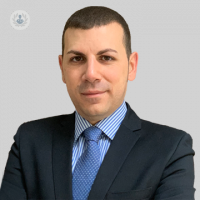Aortic root surgery
Mr Ahmed Othman - Cardiothoracic surgery
Created on: 11-13-2012
Updated on: 05-20-2015
Edited by: Jay Staniland
What is aortic root surgery?
Aortic root surgery is a surgical procedure for an enlarged aorta, often known as an aortic aneurysm. The aorta is a large blood vessel that transports blood from your heart to your body. The aortic root is the first segment of the aorta as it emerges from the heart. It holds the aortic valve and the coronary arteries.
Why is aortic root surgery done?
This surgery is carried out to prevent a rupture of an aneurysm or a tear in the internal layer of the aortic wall (aortic dissection). Aortic aneurysms near the aortic root are sometimes related to a bicuspid aortic valve, Marfan syndrome, and other genetic diseases.

What happens during the surgery?
The surgery can be performed in different ways depending on what the problem is. Some types of surgery are as follows:
- Aortic valve and root replacement: in this type of root surgery, the aortic root and the aortic valve are cut out and replaced with a synthetic tube for the aorta and an artificial valve (mechanical or bioprosthetic).
- Valve sparing aortic root replacement: this type of procedure is technically more demanding. The aortic root is replaced, while the patient's healthy aortic valve is preserved.
Surgery is recommended based on the size of the aortic aneurysm, which varies depending on whether there is a genetic cause or not.
Preparation for aortic root surgery
Before undergoing aortic root surgery, an aortic sub-specialist will explain to you what the procedure is, why it is done, as well as the risks involved and the benefits this surgery will bring to you.
After-care
The procedure takes around four to five hours. The hospital stay is approximately one week.
Full recovery and return to normal activity usually takes 8 to 12 weeks, to allow for the breast bone to heal completely.
What type of surgeon performs aortic root surgery?
Aortic surgery is usually performed by a cardiac surgeon who specialises in aortic surgery.








